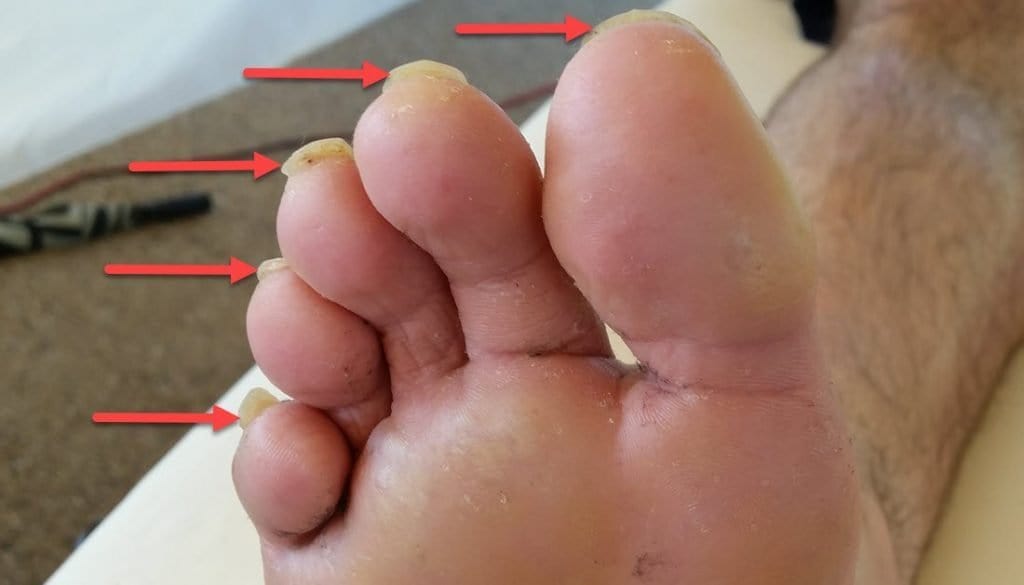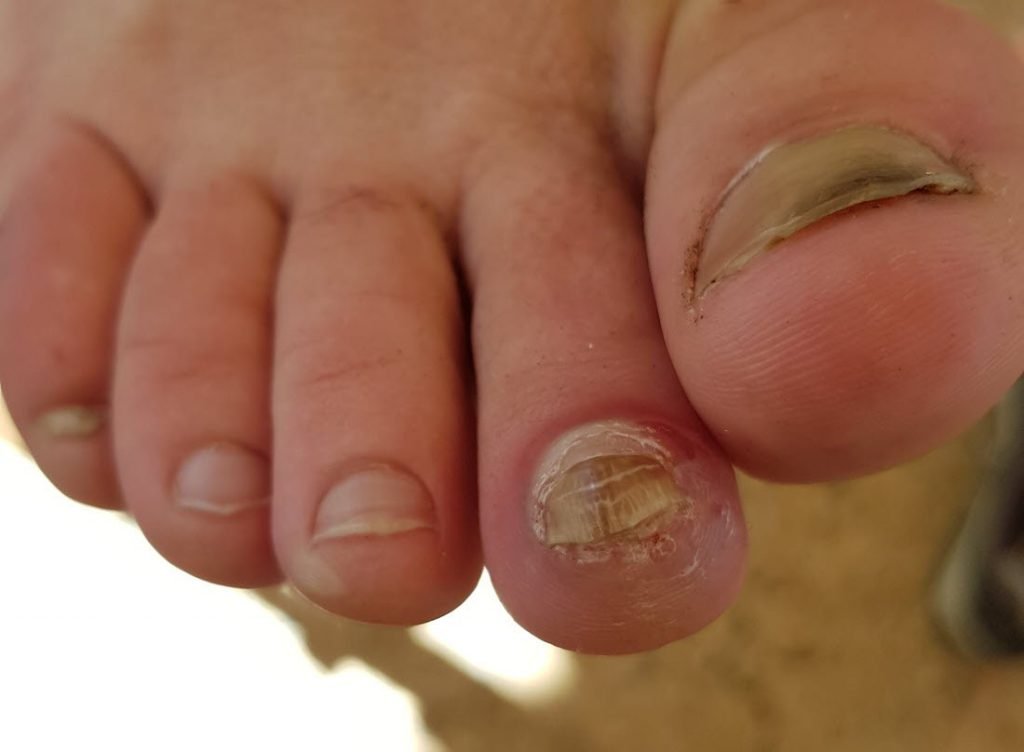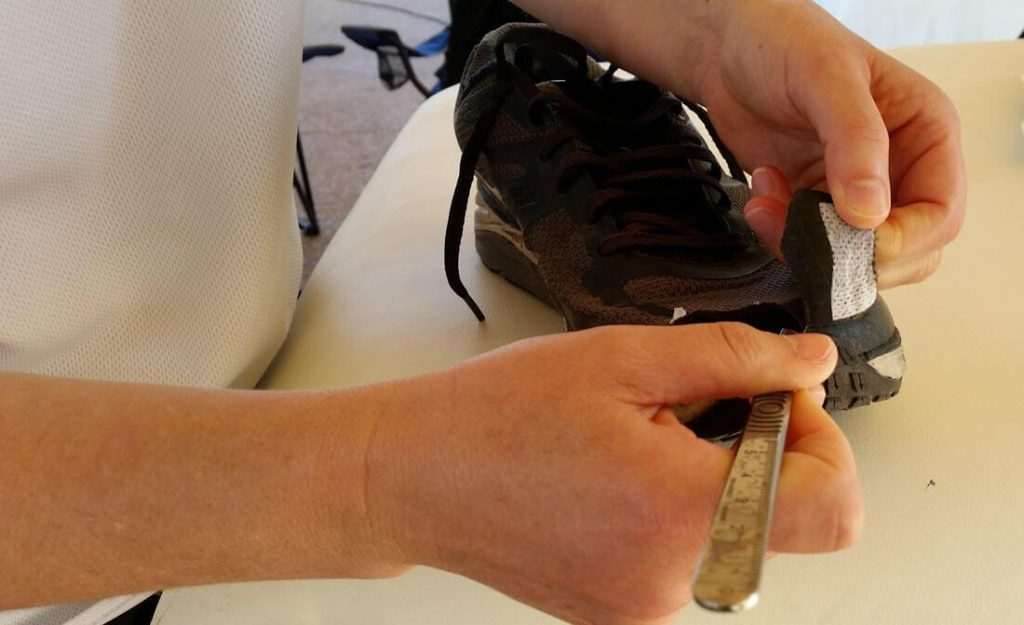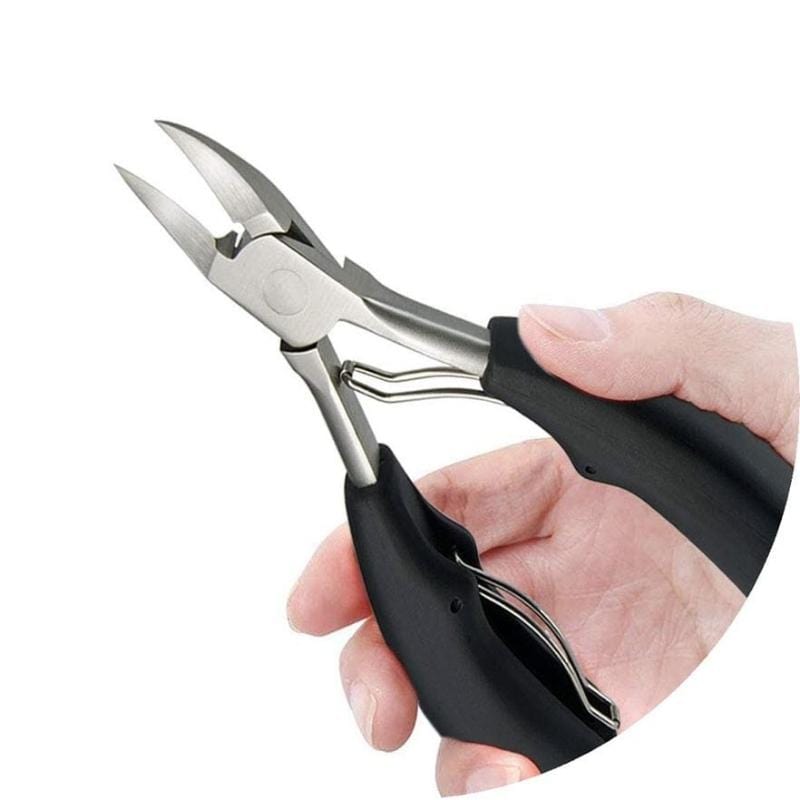Foot care volunteers like John Vonhof and myself can’t believe some of the toenails we see at running events. Long toenails, thick toenails, elevated toenails, black toenails, sometimes even slightly ingrown toenails. A little bit of pre-race toenail care for runners wouldn't go astray.

These toenails are far too long to come into a 6-day ultramarathon with. I saw this foot at around the 76 hour mark for an unrelated blister issue.
While most runners tend to their toenails before the race, some come in without having trimmed their nails in a month. So it’s no surprise to us that these are the toenails that get blisters under them.
Worse, it’s common to hear that these runners have suffered (and I mean suffered) nasty toenail blisters in the past, and still fail to give them the simple pre-race attention they deserve.
The importance of toenail care for runners, and how to do it.
While unkempt toenails aren’t the only reason one can get a toenail blister, it is the most easily avoided. How?
DIY toenail cutting:
Get a good set of toenail clippers and do it yourself. We have an incredibly sharp and easy-to-use toenail clipper in our store at a budget price with a 10 year guarantee. The thick contoured rubber handles give you the mechanical advantage to trim even the toughest and most deformed nails. And the narrow head allows you to deal with ingrown toenails much easier than normal clippers or nippers.
Don’t forget to file your nails afterwards:
Give them a once over around the free edge. Then drag your nail file from top to bottom, all around the nail. This will bevel the nail slightly so there’s a smoother free edge, less likely to catch on your socks.
See a podiatrist if you can’t or don’t want to do it yourself:
If you’ve got thick toenails, you won’t believe what we can do with them to thin them down, completely painlessly. Sincerely, if you have thick nails and you have never seen a podiatrist, please do – about a week before race day. You won’t be disappointed.
Toenail blister case study at the #Adelaide6Day ultramarathon
This year, we had a toenail blister case that was problematic within the first day. It was the big toe of one foot and the second toe of the other foot. We ruled out other causes of toenail blisters, like:
- Shoes too small or shoes too loose - read more about shoe-fit here
- Loose lacing - watch this lacing technique video to optimise shoe-fit
- Hammertoes - learn more about hammertoes and clawed toes here
- And extensor substitution (a situation where the toes draw up while the foot is in swing and get irritated by the sock and shoe toebox).

The darker (previously damaged) area of the nail is significantly elevated from the nail bed, and thick! This dark, thick, elevated nail should not be there. As the free-edge of the nail, it should be cut off. You might think it odd (and painful) to cut a nail back so significantly. In fact, it is painless to do so and absolutely the right thing to do in any situation. The area of nail bed that no longer has nail adhered to it is no more sensitive than the skin on your arm. So revealing it by cutting the elevated nail right back is fine and would have prevented blisters under this toenail. As it is, it's not hard to understand how this will catch on your socks and be likely to be irritated by the top of your shoe's toebox.
The cause of these toenail blisters, particularly the second toenail, was because it was thick and elevated. Understandably, this nail would have been tricky to trim, thin and smooth oneself. But a podiatrist could have taken this issue out of the equation within 20 seconds, pre-race. A little expert toenail care for runners seems such an easy, important and proactive thing to do.
It's too late during the race when you've got a blister already
But it was too late now. The toenail was too sore to meddle with, particularly filing, which it really needed. So we lanced the blister under the nail, dressed it and talked about shoe fit and lacing techniques to keep the toes from jamming into the toebox.
But it’s not enough to just lance and dress the toenail blister. If you want to stop any blister from reforming and getting worse, you have to take away the reasons for its development in the first place. This is how you make a blister feel better and help it start healing, in spite of continuing to run. And this is what I’m looking to do with every blister I treat.
Predictably, this blister continued to fill and get sore as the hours wore on and in a couple of days, the runner decided it was time to take definitive action. Without being able to trim and file this nail, the runner opted for a shoe toebox modification to remove the part of the shoe the nail was being irritated by due to its thickness. You can learn about the method we used for cutting holes in these running shoes here.

Cutting away a piece of the shoe toebox to stop the insult on the thick toenail with a blister under it.
These toenail blisters were expected. To me, that means they were preventable!
When you've had a toenail blister before (or in this case, multiple toenail blisters in a UK ultramarathon a year or two previous, which were really painful and impacted his race, and all of which later all fell off), you should expect to get it again.
This should prompt you to take preemptive toenail care action before race day an attempt to prevent it, right from the get-go. And it would have been oh-so-easy to avoid these toenail blisters.
Don't leave it til a few hours in, or at the hot-spot stage, or once you're really struggling with it. Do your prevention before you even get to the venue!
Especially for toenail blisters like this one, because trimming and filing these nails was not possible once they had presented to me.
Moral of the toenail care for runners story
Trim, thin and file your nails before race day. If you can’t do it yourself, see a podiatrist – they will be happy to help.








